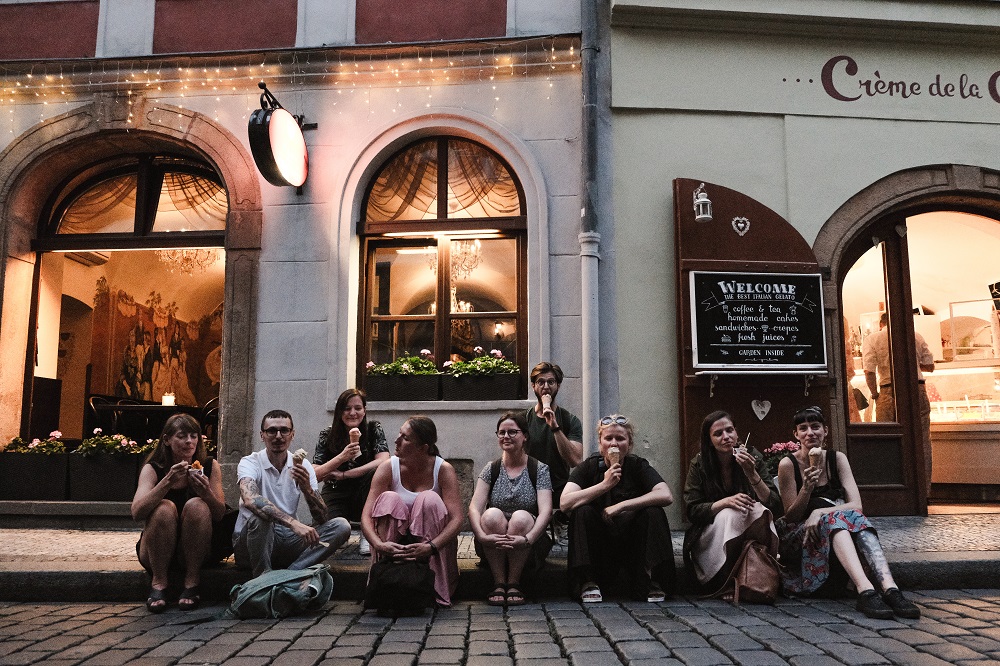Polish-Czech “Wall of Culture”
In the years 1980-1989, the Polish-Czech cooperation on the solidarity movement flourished, and eventually led to freedom of both neighbouring States. The National Centre for Culture and Good Looking Studio have decided to commemorate it by creating a trans-border work of art. Unveiling of the murals took place on October 9.
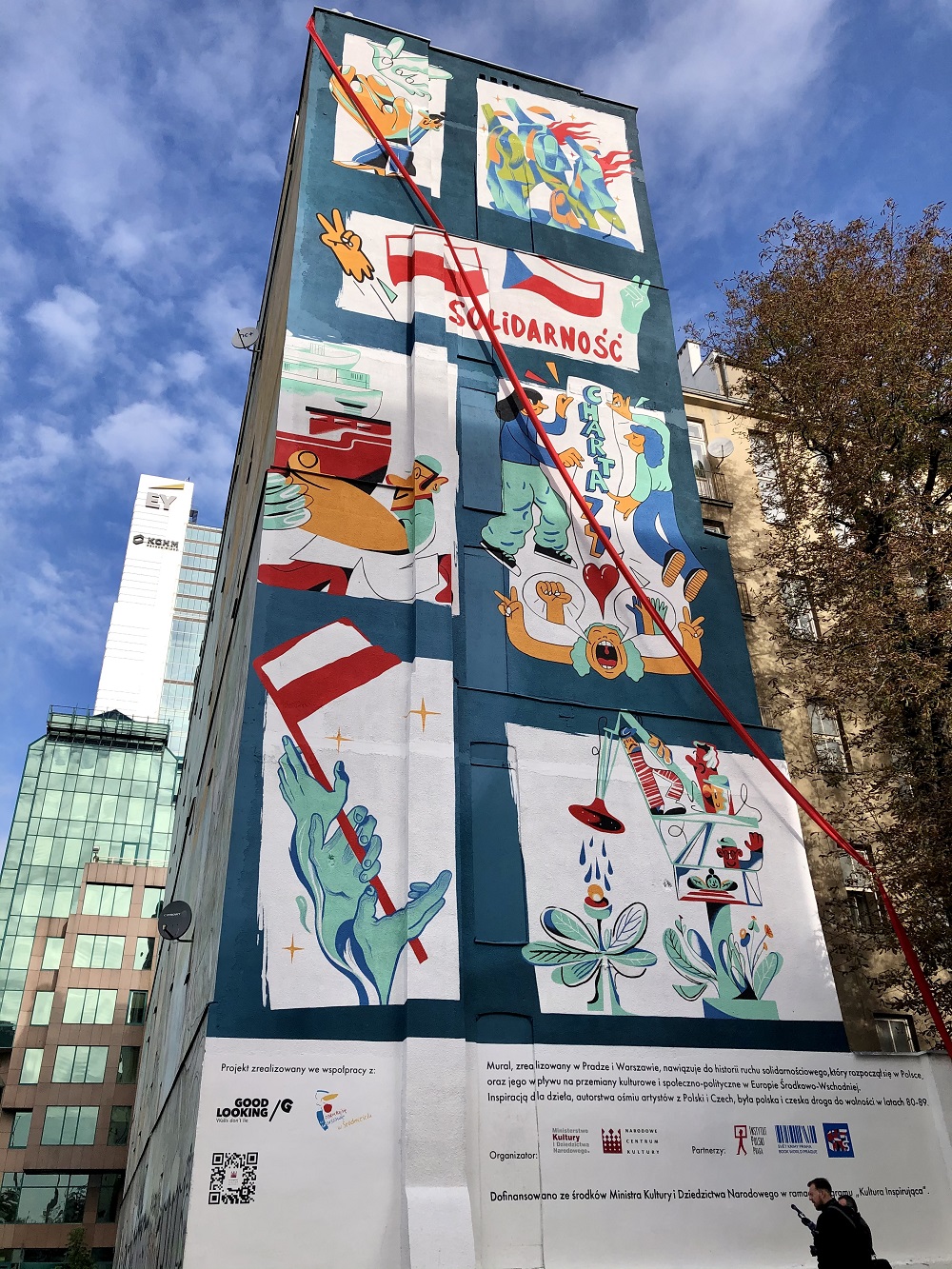
The idea to create the murals originated from the need to commemorate the revolutionary events of August 1980, which initiated the irreversible process of political changes in Poland and other countries of Central and Eastern Europe. The National Centre for Culture invited Good Looking Studio to cooperation. The assumption was to present the history of the establishment of "Solidarity" and the cooperation between the democratic opposition movements in Poland and Czechoslovakia in a form that would be more appealing to younger generations. The joint project began in the first half of this year, and its results can be admired in the form of two wall murals created in the capitals of Poland and the Czech Republic.
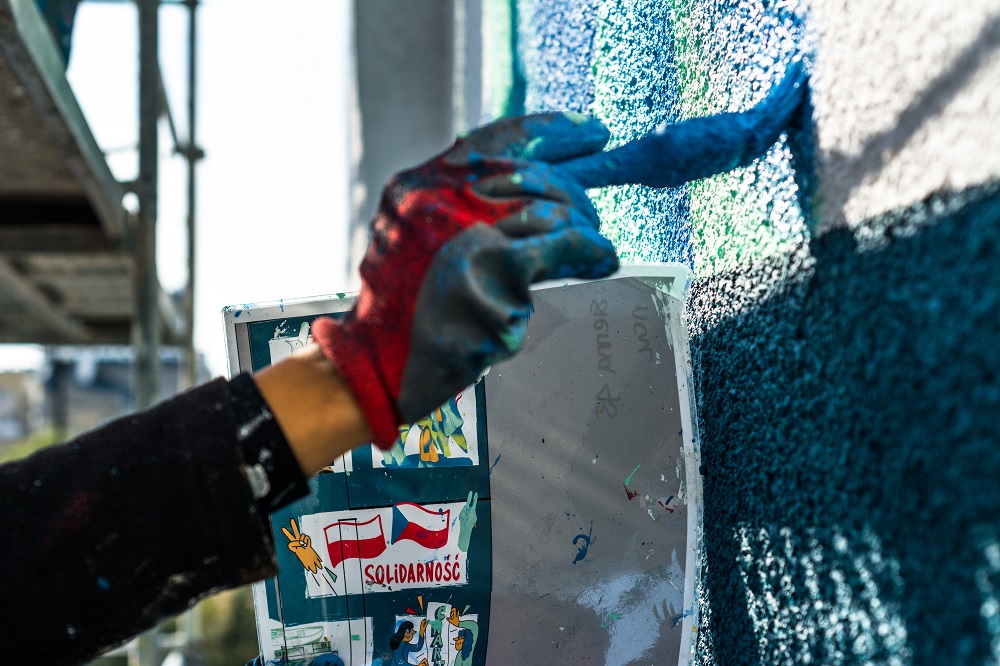
Common history
“Poland and the Czech Republic share similar historical experiences and the road to democracy and sovereignty of both states was long and difficult, pioneered by the democratic opposition. A milestone in the history was the establishment of the Polish Solidarity movement 40 years ago, which extended its influence throughout the entire region. It also became the basis of the Polish-Czechoslovak Solidarity and the underground cooperation of opposition activists involved in the movement. It was the history of Solidarity and its impact on the collapse of the communist regime and the subsequent democratization of the states in our region that was an inspiration for the eight murals created in Poland and the Czech Republic for the 40th anniversary of the Solidarity movement. The artistic concepts that they represent are of particular importance. The images painted on building walls show history in an artistic form of a collage that appeals to the young generation and reflects the contemporary perception of history. I hope that this form of artistic interpretation of history will also encourage reflection on part of thousands of passers-by in both capitals. Murals are a unique form of art shown in the largest and most frequently visited ‘gallery’ - urban space. They have a greater force of impact than conventional forms of education." – comments Prof. Rafał Wiśniewski, director of the National Centre for Culture.

In the 1980s, the democratic opposition in Poland and the then socialist Czechoslovakia repeatedly expressed mutual support and solidarity. In 1978, contacts were established between activists on both sides of the Polish-Czech border. As part of cooperation, information, literature and illegal publications were exchanged. In 1981, mutual contacts resulted in the formation of an underground organization - Polish-Czechoslovak Solidarity - the first cross-border, international opposition movement in the Soviet bloc. The cooperation between Polish and Czech activists intensified in 1987 and played a major role in the autumn of 1989, accelerating the process of transformation in Czechoslovakia. Alexandr Vondra - an opposition activist who later became a politician - admitted: “Solidarity was an inspiration for us, a source of know-how and a symbol that our situation can also turn for the better”.

Symbolic diversity
The creative process was preceded by field visits to Prague and the Tri-City by eight young artists from Poland and the Czech Republic: Karol Banach, Kinga Offert, Olga Fedirko, Kasia Majewska, Aliona Baranova, Martina Fischmeister, Marek Kulhavy and Barbora Idesova. Cooperation with the Traffic Design Association from Gdynia enabled the artists to make the most of these days and transfer their inspirations into creative output. Each of them had a task to create a thematic design and hand-paint it. The area of Węzeł Pokoju in Gdynia was chosen as the location for the municipal art gallery consisting of eight murals. Each of them contains a reference to key events in the history of Poland and the Czech Republic, but in a convention typical of a given artist, which invites the viewers to their own interpretation.
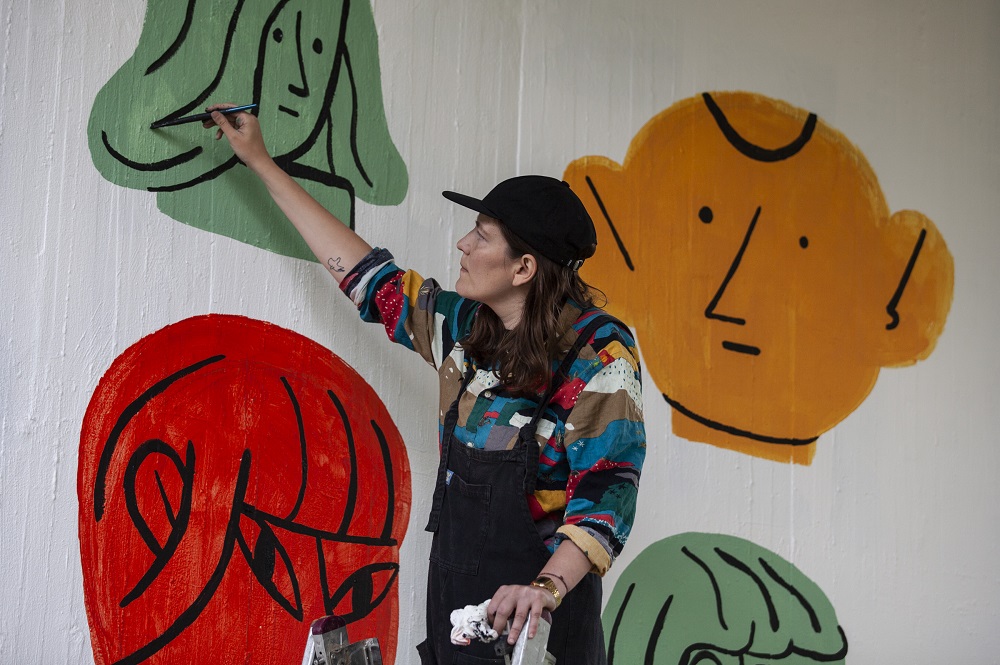
In this way, the artists had the opportunity to learn about the history of transformations in both countries. Visits to cultural institutions, participation in meetings, learning about historical places, memorabilia and monuments supplemented the textbook knowledge and gave a new perspective on the process of political transformations that took place in the 1980s. A proper prior preparation allowed to achieve the desired effect - diversity of the individual elements of the final mural design.
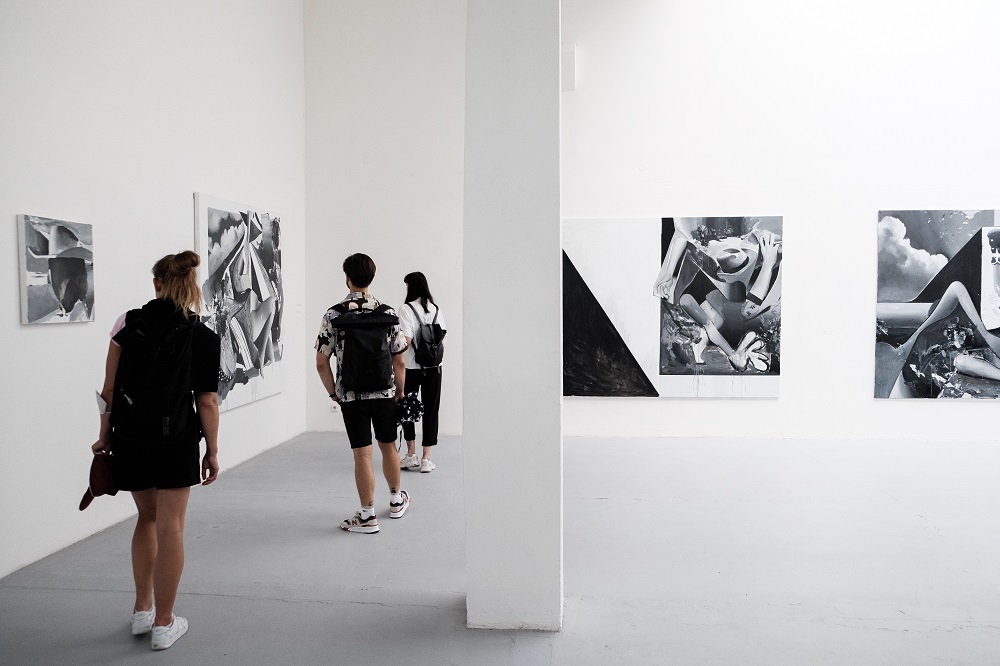
“In our creative concept, we wanted to show a diversified interpretation of various aspects related to the Solidarity movement. In a sense, this is an analogy to the movement itself, which brought together different individuals who contributed to its establishment, evolution over the years, and perception by the society, both at the local and international level. We decided to invite eight artists representing various styles to cooperation and entrust them with creation of their own unique interpretation of the facts and events related to the movement. A common road to freedom of Poland and the Czech Republic was symbolized by combining both murals into one composition that forms a whole. We had to face numerous challenges throughout the creative process, but we are proud of the final result." - says Piotr Ruszkowski, Creative Director of Good Looking Studio.

“We received the invitation of the National Centre for Culture to participate in a project commemorating such important events very enthusiastically. The history of the social movement that led to fundamental changes should be widely known, so we are glad that we can contribute to preservation of its memory. We decided to create something transnational and unique, in a form that has not been implemented so far. We hope that our unusual creative idea will help to arouse the interest of the media and the viewers in the breakthrough events in the history of not only Poland, but the whole Central and Eastern Europe.” - says Bartek Leśniewski, co-founder of Good Looking Studio.
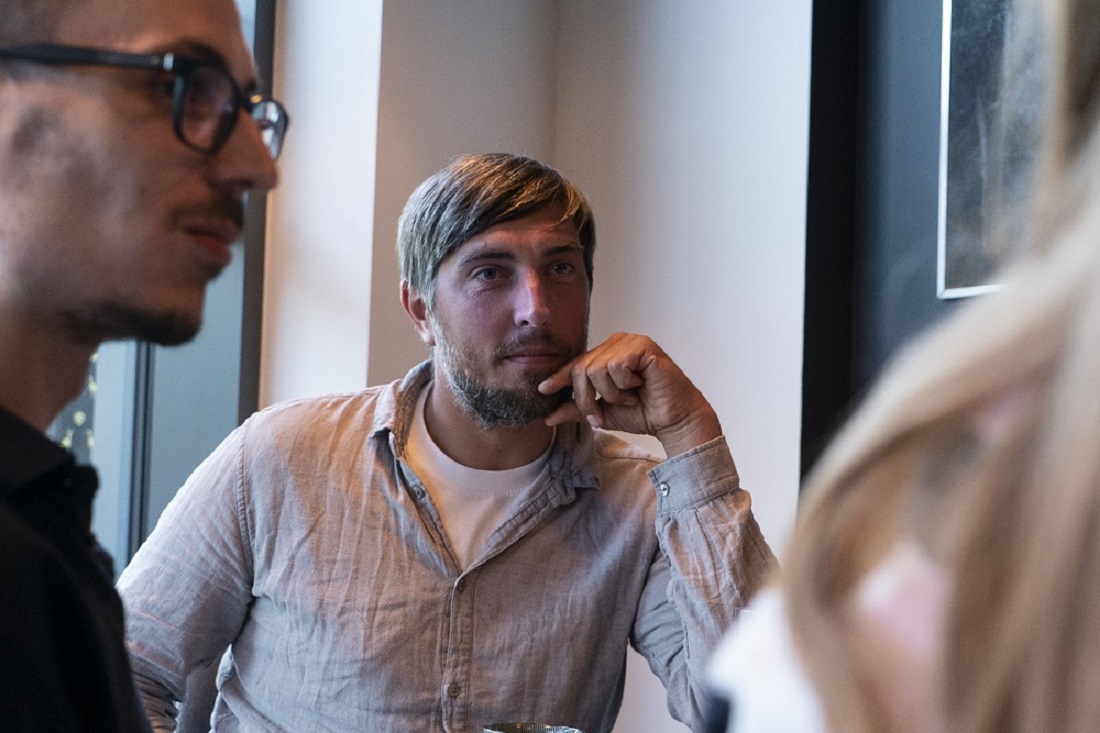
Grab your brushes – from designs to the work of art
After several months of preparations, at the beginning of October, the most important stage of the project began, which was the transfer of the artistic concept on the walls. The murals in Prague and Warsaw were created simultaneously by the artists from Good Looking Studio.
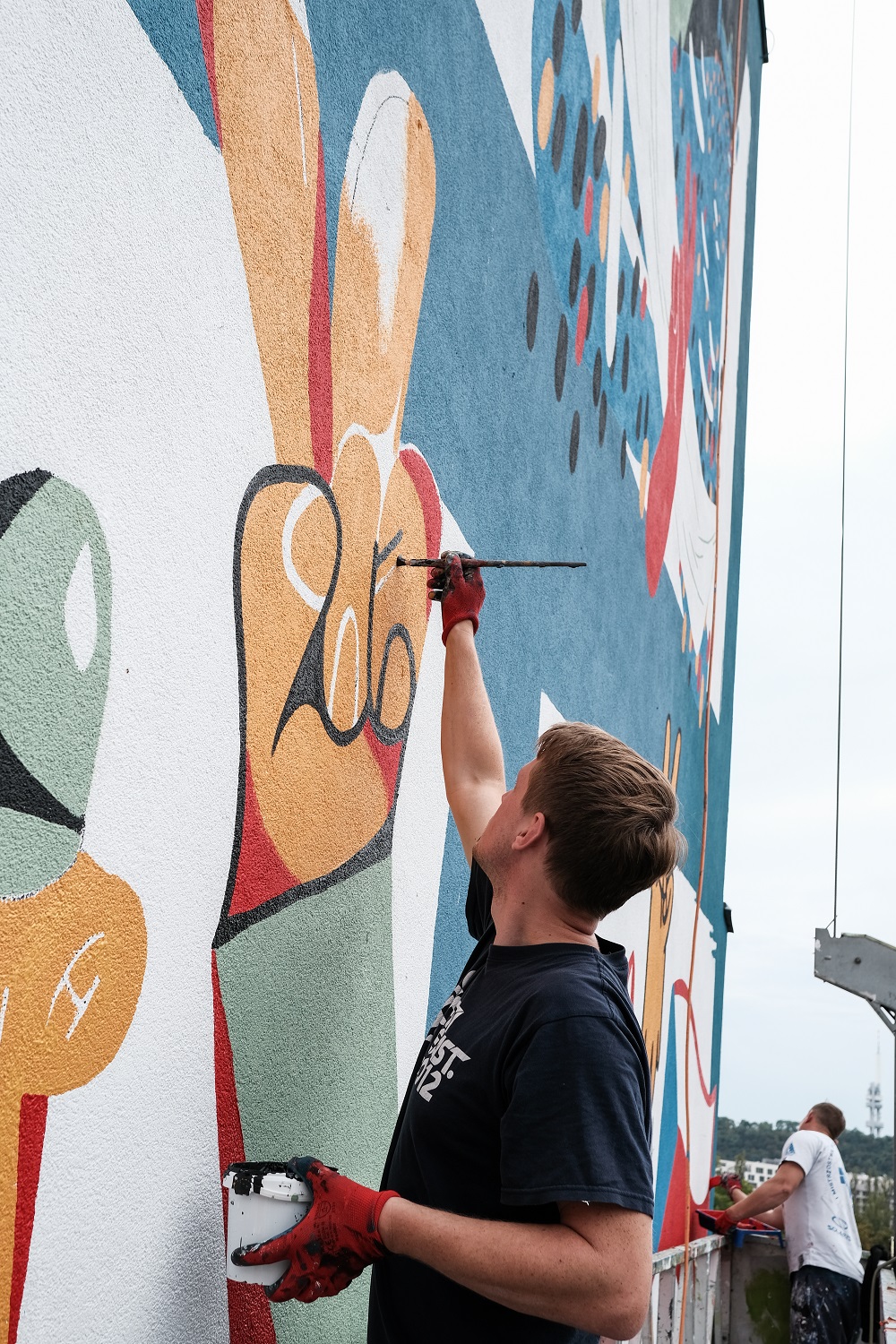
The official, simultaneous unveiling of the murals in the capitals of both countries took place on October 9, at 10:30. In Prague (42 Tusarova Street), it was attended by Maciej Ruczaj - Director of the Polish Institute, Helena Trestikova - deputy mayor and councillor for culture of the City of Prague, Antoni Wręga charge d'affiars a.i. of the Embassy of the Republic of Poland, Bartłomiej Leśniewski - co-founder of Good Looking Studio, as well as the media and residents of Prague. At the same time in Warsaw (45 Sienna Street), the other mural was unveiled by Rafał Wiśniewski - Director of the National Centre for Culture and Piotr Ruszkowski, Art Director of Good Looking Studio.
The exhibition of both murals will be limited in time. At the moment, it is planned for the next 24 months, but is subject to change.
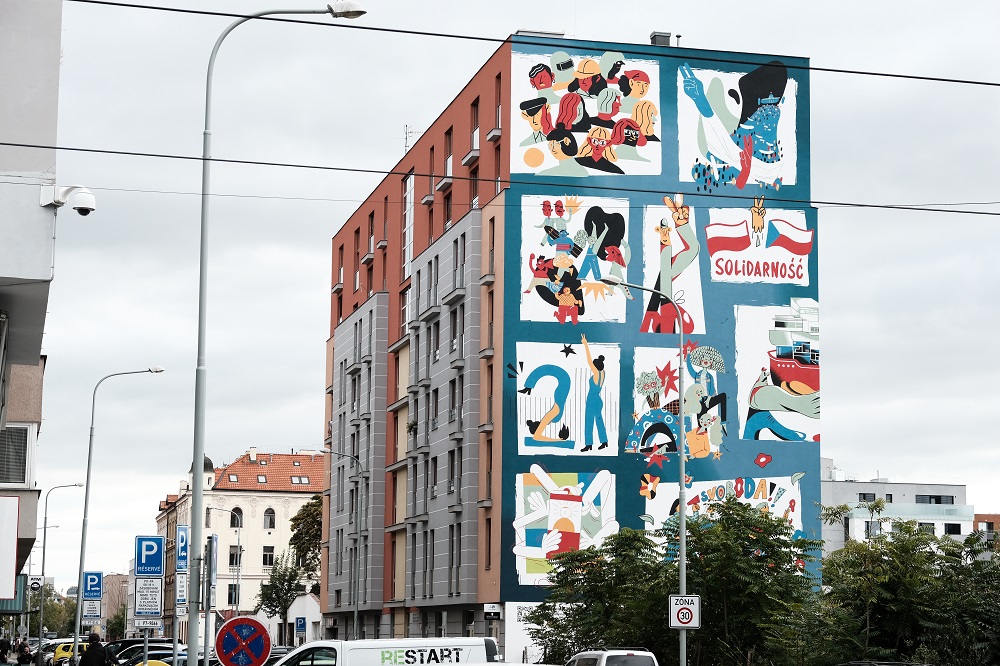
Partners
The partners of the project implemented by the National Centre for Culture and Good Looking Studio include: the Ministry of Culture and National Heritage, the Polish Institute in Prague, Svet Knihy, Praha 7 and the Traffic Design Association.
The implementation of the project was possible thanks to co-financing from the "Kultura Inspirująca" ("Inspiring Culture") grant program by the Polish Ministry of Culture and National Heritage.
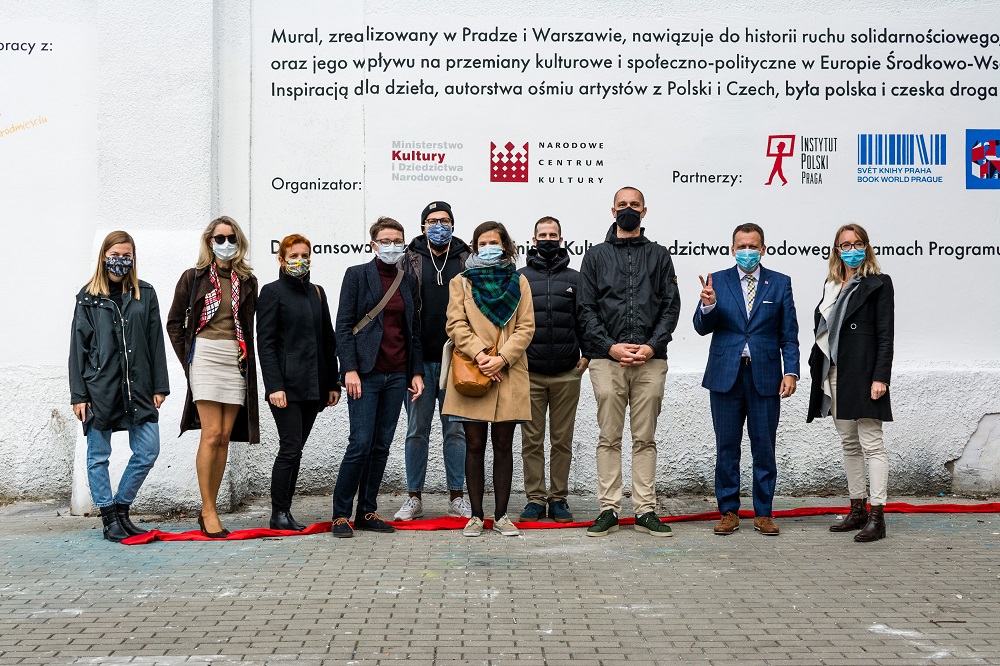
Artists
The artists that participated in the project include: Karol Banach, Kinga Offert, Olga Fedirko, Kasia Majewska, Aliona Baranova, Martina Fischmeister, Marek Kulhavy and Barbora Idesova.
